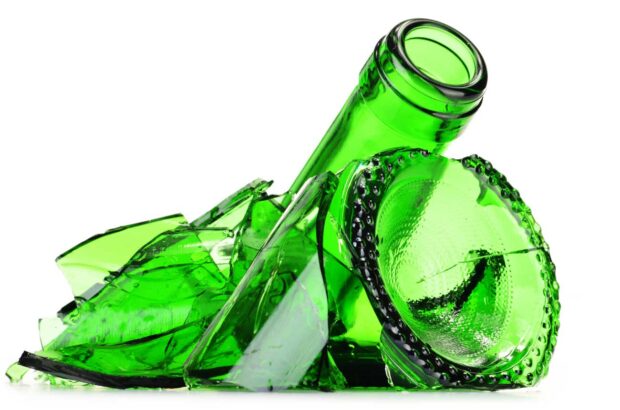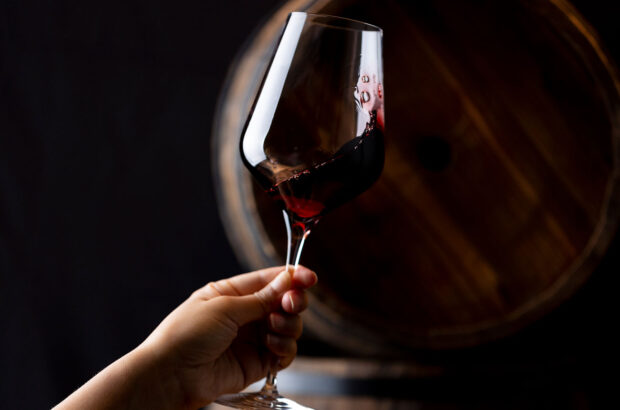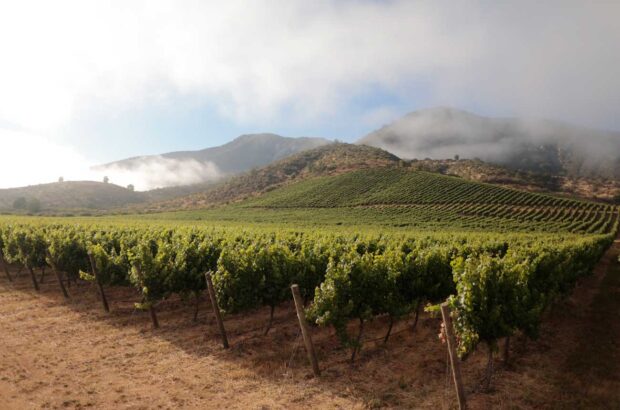One of the Loire’s most diverse regions, Anjou-Saumur offers wines in a wide range of styles, the greatest being reds from Cabernet Franc and sweet whites from Chenin Blanc. JIM BUDD looks at the best producers and the great vintages.
They were told to stop picking when the mustometer reading for my Chenin Blanc reached 16.5% potential alcohol,’ says Jean-Pierre Chevallier of Château de Villeneuve, makers of Saumur Blanc and Saumur-Champigny. ‘There was no way I could make dry white wine when the grapes were so rich, so in 2003 for the first time since 1921, we have made commercial quantities of sweet Coteaux de Saumur.’ This is just one tale from the extraordinary but far from easy 2003 vintage in Anjou-Saumur. Very early budding, frost in the second week of April, intense heat in early August, and for many the earliest harvest since 1893. But producers had to be careful as physiological ripeness lagged behind potential alcohol levels, so Cabernet Franc that would normally ripen to around 12.5% had to be left until 13.5–14%, resulting in some atypical wines for the region.
https://www.decanter.com/features/wines-of-the-loire-valley-249456/
Anjou Saumur Varied Treasures
The climate of Anjou-Saumur is not usually given to great extremes of temperature or drought and the landscape is gently rolling. The region stretches west to east, from la Pommeraye to Montsoreau.
Between la Pommeraye and Montsoreau a wide range of wines are made. If you exclude fortified wines, there is virtually every style of wine possible. From ultra-dry whites to unctuously sweet; dry rosés to sweet versions that have the capacity to age; from light reds for early drinking to more full bodied and structured reds that need time to mature; plus sparkling wines in all three colours.
Although Anjou and Saumur are linked, geologically they are two distinct regions. Saumur is limestone, while Anjou is granite, schist and slate. The sedimentary rocks of Saumur are an extension of the Paris basin, whereas Anjou is an extension of the igneous rocks of the Brittany peninsula. The different rocks produce different wines – Saumur whites have a higher degree of acidity while the reds are softer. There are also few cellars in Anjou as the rock is too hard, whereas the Saumur area is riddled with caves both around the town of Saumur and further south around Le Puy-Notre-Dame. This is one reason why it became a sparkling wine area, as producers took over after tuffeau, the local name of the limestone, had been quarried for building.
Great Grapes
In both Saumur and Anjou Cabernet Franc and Chenin Blanc are the leading grape varieties. The earlier ripening Cabernet Franc is better suited to the Loire climate than Cabernet Sauvignon, which accounts for only 15% of Cabernet planted in the Valley.
https://www.decanter.com/premium/top-dry-loire-chenin-blanc-353130/
More Cabernet Sauvignon is planted in Anjou than anywhere else in the Loire but it is often planted in the wrong place and for the wrong reason. It was thought to be a good idea to plant in frost-prone zones as it buds later than the Franc. It may escape the frost but it only ripens in well-exposed or warm-soiled plots such as the Lebreton family’s Croix de la Mission in St-Jean de Mauvets or Vincent Ogereau’s Côte de la Houssaye at St-Lambert du Lattay.
Anjou is the birthplace of the highly versatile Chenin Blanc, which is the basis for all the region’s white wines, although Chardonnay and Sauvignon can be used as small proportions of the blend. Chenin is the oldest known Loire grape and the first historical record dates from the ninth century at Bouchemaine, near the present day appellation of Savennières, which is famed for its steely, long-lived, minerally whites made entirely from Chenin. Savennières is the sole appellation located north of the Loire river in Anjou-Saumur.
In the Coteaux du Layon and the Coteaux de l’Aubance, there was a renaissance of sweet wine which started around 1985 and continued through the 1990s. Magnificent though many of these wines are, it is difficult to sell quantities of sweet wine year after year. Even lovers of sweet wines drink relatively few bottles a year in comparison to dry whites or reds.
Thanks to a combination of climate and the resilience of Chenin Blanc, it is possible to make some sweet wine every year in the Coteaux du Layon and the smaller and more northerly appellation of Coteaux de l’Aubance, and yet there is now a commercially imposed move away from sweet whites. At Château de Fesles, the show estate of Bonnezeaux, the amount of sweet wine now being made has been drastically reduced in favour of dry white. Even Jo Pithon, a leader of the super-concentration movement in the 1990s, has had to change. ‘Five years ago we made 75% sweet wine to 25% dry. These days it’s the other way round,’ he says.
Many of the producers in the Anjou-Saumur region come from families that have been wine producers for generations. The Daviau family (Domaine de Bablut) have been in Brissac since 1546 and the Richou family (Domaine Richou) started making wine four years later in nearby Mozé-sur-Louet. However, there are newcomers. Actor Gérard Depardieu bought Château de Tigné in the 1980s. Bernard Germain added 100ha (hectares) in the Loire to his 200ha in Bordeaux first by buying Domaine des Roche Neuves (Saumur-Champigny) in 1991, followed by Châteaux de Fesles (Bonnezeaux), la Roulerie (Layon-Chaume), la Guimonière and Château de Varennes (Savennières).
More recently Frédéric Etienne and his wife Fatima bought a vineyard at Martigné-Briand in the Layon Valley. Etienne gave up his career as an agricultural engineer and 2003 is their second vintage at Domaine du Regain. The 2002s were an impressive start, with yields kept well down.
It seems likely that a good number of wine drinkers will discover the reds of Saumur and Anjou through the atypical 2003 vintage. Lovers of sweet wines should also be making space in the cellar.
RECENT VINTAGES
2003
Low quantity due to mid-April frost and the heat of the summer. Potentially magnificent wines. The few reds I have so far tasted were higher in alcohol than is customary but have structure and good acidity.
2002
Pretty dreary summer saved by a remarkably fine September and October, which produced a good vintage.
2001
Fine weather in October and into November
produced fine Coteaux du Layon and Coteaux de l’Aubance.
2000
Some reasonable dry whites and reds made,
probably not for long keeping. Heroically a tiny quantity of decent sweet wine was made.
1999
An attractive vintage for dry whites and sweets as well as reds.
1998
Only rigorous producers made reasonable reds. A few sweet wines were made. Best avoided.
1997
Very appealing red wines and some especially fine sweet wines.
1996
A classic Loire vintage. Overall probably the best vintage of the 1990s.
1995
The first decent vintage after 1990 and the first of a run of three fine vintages. A long keeper.
1990
Attractive wines but without the ageing potential of 1989.
1989
Hot summer and fine autumn. One of the great vintages of the 20th century.
Jim Budd runs wine investment website, www.investdrinks.org, and is an expert on the wines of the Loire.







